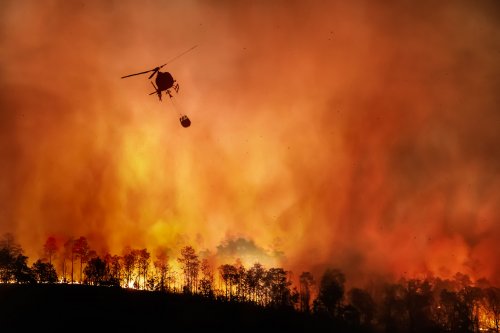An International Energy Agency (IEA) study found that carbon emissions differ across income groups, with the richest 1% of the world's population generating 1,000 times more CO2 than the poorest 1%.
If the richest people maintain current levels of emissions, only they will exceed the 1.5°C warming carbon limit by 2046, according to the IEA.
In 2021, the average North American emitted 11 times more energy-related CO2 than the average African. The global average carbon footprint associated with energy use is about 4.7 tons of CO2 per person.
The authors highlighted that in 2021, the top 10% of the population (782 million people) emitted an average of 22 tonnes of CO2 per capita, more than 200 times the average of the bottom 10%.
They added that about 0.6% of the world's people - roughly 46.8 million - are considered millionaires or billionaires. Most of them live in developed economies. The lowest 10% of emitters live in developing countries, particularly in Africa and Asia, where they consume relatively few goods and services and in many cases lack access to electricity and clean cooking.
The Stockholm Environment Institute estimates that the richest 0.1% of the world's population emits 10 times more than the rest of the rich 10% combined, more than a combined footprint of 200 tonnes of CO2 per capita annually. That 0.1% includes the billionaires and multimillionaires whose superyachts, private jets and emission-intensive mansions have caught the attention of climate activists.
Individual emissions can be broken down into:
- household consumption (all electricity and fuel consumed in the home);
- personal transport (passenger and non-freight road, rail, air and maritime transport) – differs especially among large economies;
- emissions of goods and services.
The study emphasized that a few years ago, differences in greenhouse gas emissions within countries and regions began to become even more significant than between countries.
“In the United States, the richest decile ( 1/10 part) emits more than 55 tons of CO annually 2 per capita. Compared to other regions, road transport accounts for a particularly large share, one quarter, of the top decile's carbon emissions. In the European Union, the richest decile emits about 24 tons of CO 2 per capita,” the statement said.
Emissions disparities in China and India, as well as other developing countries, are found to be higher than in developed economies, with top decile emissions 5 to 8 times the average.
The study noted that if the top 10% of global emissions remain at current levels, only they will exceed the remaining carbon budget under the IEA's net zero emissions scenario by 2050 to 2046. Substantial and swift action by the richest 10% is needed to rapidly decarbonize to keep warming at 1.5°C.
The authors noted that the richest group often has the greatest financial capacity to implement low emission energy efficient solutions with high upfront costs.
They added that individual changes in energy consumption behavior can also help reduce emissions, in particular:
- temperature control for space heating;
- replacing short-haul flights with high-speed rail;
- reduction of long-haul flights for business meetings;
- rejection of cars with an internal combustion engine;
- car sharing and economical driving;
- speed reduction on highways up to 100 km/h;
- reducing the use of air conditioners in cars.
"The IEA will continue to deepen its analysis of inequalities in energy transitions, including further examination of how inequalities evolve over time," the authors stressed.
As EcoPolitic reported earlier, A study by economists from the World Inequality Lab found that the top 10% of the world's wealthiest people, the so-called "polluting elite", create about half of the annual carbon emissions.





